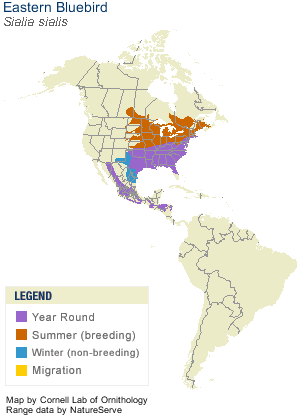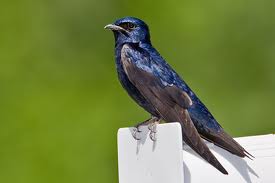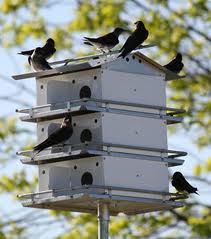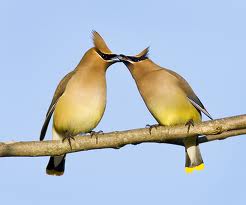|
Anniversary Celebration - 12 Years
Yes, we're celebrating 12 years of ownership of Wildbird & Backyard and we're inviting you to celebrate with us. Through the month of March you'll have the opportunity to save on every purchase - we're bringing back the Discount Dice. With every purchase you'll be given 3 dice and a chance to roll a total of 12 with those dice! If you're having a lucky day and you have that perfect roll, we'll give you 12% OFF your entire purchase and your name will be entered into a drawing for one of 12 Gift Baskets and Prizes at the end of the month. Also, the entire stock of binoculars and scopes will be On Sale, just in time for watching all the spring bird activity in your backyard. Come Celebrate with us - and THANK YOU for making Wildbird & Backyard your birding store and giving us 12 years of your loyalty and friendship.
Discount Dice - Roll 12 for 12% off & entry for Gift Baskets
Sale Prices on Binoculars & Scopes
The Rites and Rituals of Spring
In every part of the country there is movement by birds of some kind. In the north it is the time for waterfowl to leave their wintering grounds and begin moving to the nesting grounds. Great flocks of snow geese, Canada geese and whistling swans join the myriad flocks of ducks moving north. The honking of the geese and strange whistling of the swans is about as sure a sign of spring as anything can be.
Further south, the insect eaters are beginning to move. As the warm weather of March begins to bring out insects, the southern half of the country begins to see the arrival of the first of the birds that feed on insects. Swallows, phoebes, wrens and some of the warblers will be among the first to start north.
This whole idea of migration and how birds find their way back to the same areas each year is still somewhat of a mystery to scientists. The why of migration is food supply for most as the cold temperatures of the northern half of the country remove the insect population and force the birds out. For waterfowl, ice is usually the major limiting factor as many species will only move as far south as they have to and still find open water. The avoidance of competition, abundance of food and favorable habitat of the north bring the birds back each spring.
An additional trigger for the birds to migrate is the need to breed to repopulate their species. Often, they return in the spring to procreate in the exact nesting spot they vacated in the fall. Birds certainly do qualify as creatures of habit. Those baby birds of last summer should be returning to your backyard this spring – be ready for them.
Watch for daily changes in your backyard. We have the group of birds who don’t migrate, who spend the winter with us, who will be showing signs of spring. Many of the males will be strutting about with their renewed bright colors; the male goldfinch who was olive green all winter will soon be bright gold once again. We’ve already heard the sounds and calls of the male cardinals, claiming their territories and courting their mates, the woodpeckers are drumming out their territories as well.
The migrating birds will be hungry upon their arrival. Be sure to prepare your yards with full feeders, water and eventually fruit and sugar water. Take inventory and clean your feeders, determine if you want to add any specialty feeders to your feeding station. Also, don’t forget that now is the time to clean out, check and repair any nest boxes your have. Along with the nest boxes be sure to offer nesting material to encourage the building of nests close by. Soon you’ll have the opportunity to watch as the parents bring their young to your feeders to feed.
There are a few migrating birds that may be less common because they are more selective in their preferred habitats, not frequenting the basic backyard. Bluebirds and Purple Martins have more specific aerial space requirements, desiring open spaces, while the Sandhill Cranes prefer marshes and open fields.
Crane Migration
 Sandhill Cranes are on the move in fall and spring when they migrate to and from Florida where they spend the winter months. They return to Wisconsin ’s marshes in March and can be heard from long distances away, making a clacketty-clack and bugling call. Cranes select a mate when they are 4 years old and live as many as 25 to 30 years with the same mate. Crane families migrate south together. Young birds that have outgrown their parents, hang out together in groups of 20 called a “Bachelor Flock.” They migrate and feed together at night in open woods and fields away from the marsh. When the Sandhill Cranes are ready to mate they begin a unique courtship ritual with a series of dances that they do while making calls. This dance looks like 2 marionette puppets frolicking delicately on strings. They bow and leap and let out a series of loud calls. Sometimes you can hear them from 2 miles away on quiet spring mornings. You will not find Sandhill Cranes at your feeders as they prefer tubers, worms, grasshoppers, snails, frogs and sometimes snakes and mice. Sandhill Cranes are on the move in fall and spring when they migrate to and from Florida where they spend the winter months. They return to Wisconsin ’s marshes in March and can be heard from long distances away, making a clacketty-clack and bugling call. Cranes select a mate when they are 4 years old and live as many as 25 to 30 years with the same mate. Crane families migrate south together. Young birds that have outgrown their parents, hang out together in groups of 20 called a “Bachelor Flock.” They migrate and feed together at night in open woods and fields away from the marsh. When the Sandhill Cranes are ready to mate they begin a unique courtship ritual with a series of dances that they do while making calls. This dance looks like 2 marionette puppets frolicking delicately on strings. They bow and leap and let out a series of loud calls. Sometimes you can hear them from 2 miles away on quiet spring mornings. You will not find Sandhill Cranes at your feeders as they prefer tubers, worms, grasshoppers, snails, frogs and sometimes snakes and mice.
Bluebirds Return
 Eastern Bluebirds are among the first birds to come back to Wisconsin for the breeding season and are often welcomed as one of the first signs of spring. Bluebirds are members of the Thrush family, wintering in the southern US and Mexico and then returning north in late March and early April to claim their nesting sites. Males return north about a week before females in order to establish their breeding territory. They seek out nest boxes, old woodpecker holes and rotten fence posts as suitable homes to raise their young. Once the males have decided on a suitable nesting cavity, they will guard it fiercely and try to attract females. When a female shows up the male quivers his wings and pops in and out of the next box hole as she watches him. This may go on for some time before the females finally goes into the nest box to examine it. The male gets very excited when she enters the box and will sing and quiver his wings. The female will construct the nest in four to five days with only minimum help from her mate. Many Bluebird pairs will claim the same nesting site year after year. We can help the Bluebirds increase their population by providing safe, sparrow free nesting sites for their breeding season. In nature, Bluebirds are finding that their nesting choices of dead trees and rotten fence posts are being removed and replaced with landscaped lawns and aluminum posts. Nest boxes provide safe cavities for nesting Bluebirds. The key to attracting Bluebirds to nest in your yard is having plenty of potential nesting locations, food and water. Approximately two-thirds of their diet consists of insects and other invertebrates. The remainder of the bird's diet is made up of wild fruits. Favored insect foods include grasshoppers, crickets, katydids, and beetles. Other food items include earthworms, spiders, millipedes, centipedes, sow bugs, snails and mealworms. We have mealworms at Wildbird & Backyard, as well as a variety of special feeders that the Bluebirds will be able to feed from. Bluebirds do prefer more “open areas” so if your yard is heavily wooded you’ll enjoy many other nesting birds, but probably not Bluebirds Eastern Bluebirds are among the first birds to come back to Wisconsin for the breeding season and are often welcomed as one of the first signs of spring. Bluebirds are members of the Thrush family, wintering in the southern US and Mexico and then returning north in late March and early April to claim their nesting sites. Males return north about a week before females in order to establish their breeding territory. They seek out nest boxes, old woodpecker holes and rotten fence posts as suitable homes to raise their young. Once the males have decided on a suitable nesting cavity, they will guard it fiercely and try to attract females. When a female shows up the male quivers his wings and pops in and out of the next box hole as she watches him. This may go on for some time before the females finally goes into the nest box to examine it. The male gets very excited when she enters the box and will sing and quiver his wings. The female will construct the nest in four to five days with only minimum help from her mate. Many Bluebird pairs will claim the same nesting site year after year. We can help the Bluebirds increase their population by providing safe, sparrow free nesting sites for their breeding season. In nature, Bluebirds are finding that their nesting choices of dead trees and rotten fence posts are being removed and replaced with landscaped lawns and aluminum posts. Nest boxes provide safe cavities for nesting Bluebirds. The key to attracting Bluebirds to nest in your yard is having plenty of potential nesting locations, food and water. Approximately two-thirds of their diet consists of insects and other invertebrates. The remainder of the bird's diet is made up of wild fruits. Favored insect foods include grasshoppers, crickets, katydids, and beetles. Other food items include earthworms, spiders, millipedes, centipedes, sow bugs, snails and mealworms. We have mealworms at Wildbird & Backyard, as well as a variety of special feeders that the Bluebirds will be able to feed from. Bluebirds do prefer more “open areas” so if your yard is heavily wooded you’ll enjoy many other nesting birds, but probably not Bluebirds
The Fascinating Purple Martin
 The Purple Martin is another migrating bird that you will not see at your bird feeders, but certainly in more open areas such as meadows, water edges and marshes. Every year the estimated arrival date of the first scouts is around April 15. The Purple Martins do a “complete migration”, meaning every year all members of the species migrate from their breeding range to a non-breeding, winter range. They will breed in Canada and U.S. and winter primarily in Brazil. Those who arrive here and settle east of the Rockies are totally dependent on human-supplies housing, either houses or gourds. West of the Rockies and in the deserts they largely nest in their ancestral ways, in abandoned woodpecker nest cavities. By spending the summers here these birds will have an abundance of food. In there spring and summer, there is a great increase here in the number of insects available for the insectivorous martins. This increase in resources allows them to gather food with less competition from other birds. It has also been suggested that the length of daylight during the northern summers provides martins with more time to gather food and feed their young. Most songbirds migrate at night, when there are fewer predators and more stable atmospheric conditions. During the night, the chances of dehydration lessen due to cooler air. However, Purple Martins are aerial insectivores and eat on the wing, migrate during the day. Eating on the wing is beneficial in that it allows for a faster migration, as they don’t have to stop to feed. On the other hand, this daytime migration makes martins more susceptible to predators such as hawks. A martin can fly at speeds anywhere from 5 to 40 miles per hour with an average speed of 20 miles per hour. The Purple Martin is another migrating bird that you will not see at your bird feeders, but certainly in more open areas such as meadows, water edges and marshes. Every year the estimated arrival date of the first scouts is around April 15. The Purple Martins do a “complete migration”, meaning every year all members of the species migrate from their breeding range to a non-breeding, winter range. They will breed in Canada and U.S. and winter primarily in Brazil. Those who arrive here and settle east of the Rockies are totally dependent on human-supplies housing, either houses or gourds. West of the Rockies and in the deserts they largely nest in their ancestral ways, in abandoned woodpecker nest cavities. By spending the summers here these birds will have an abundance of food. In there spring and summer, there is a great increase here in the number of insects available for the insectivorous martins. This increase in resources allows them to gather food with less competition from other birds. It has also been suggested that the length of daylight during the northern summers provides martins with more time to gather food and feed their young. Most songbirds migrate at night, when there are fewer predators and more stable atmospheric conditions. During the night, the chances of dehydration lessen due to cooler air. However, Purple Martins are aerial insectivores and eat on the wing, migrate during the day. Eating on the wing is beneficial in that it allows for a faster migration, as they don’t have to stop to feed. On the other hand, this daytime migration makes martins more susceptible to predators such as hawks. A martin can fly at speeds anywhere from 5 to 40 miles per hour with an average speed of 20 miles per hour.
.jpg)
 It can be a challenge to establish a Purple Martin colony, so patience is needed. It is important to educate yourself on everything from choosing the right location for the house, providing and maintaining the house and also protecting your housing from predators. There are many great books and websites available to help you succeed. First and foremost, to be successful your site needs to be ape a bit of Purple Martins are the largest member of the swallow family in North America , measuring 7 ½ inches long and weighing 1.9 ounces. The pair-bond of these martins is monogamous. The male and female cooperate equally in building the nest out of mud, grass and twigs. The female lays two to seven pure-white eggs at a rate of one egg per day. She then incubates the clutch for approximately 15 days before the eggs hatch. The parents both feed the young continuously for a period of 26-32 days until the young fledge. The young continue to be dependent on their parents for food and training for an additional one to two weeks after fledging. It’s not uncommon for the fledglings to return to their human-supplied housing at night to sleep. As stated in the above article, the Purple Martins are daytime feeders, feeding on insects high in the sky during the day. Because of their daytime diet they are extremely vulnerable to weather conditions that affect insect availability. Prolonged bad weather, such as rain, snow, cool temperatures and/or heavy winds, all reduce or eliminate insect flight. If poor weather persists for more than 2 or 3 days, martins begin to die of starvation. Heat waves and droughts can also be a problem. propriate martin habitat. Martins have very specific aerial space requirements; housing should be placed in the center of the most open spot available, about 30-120 feet from human housing. There should be no trees taller than the martin house within 40 feet, preferable 60 feet. Purple Martins “glide and swoop” while they are feeding, thus needing the open space. Many people who live on water place their martin houses at the end of their docks – a perfect place for space and insects! Come in to Wilbird & Backyard with your questions about Purple Martins and we’ll be ready to help. It can be a challenge to establish a Purple Martin colony, so patience is needed. It is important to educate yourself on everything from choosing the right location for the house, providing and maintaining the house and also protecting your housing from predators. There are many great books and websites available to help you succeed. First and foremost, to be successful your site needs to be ape a bit of Purple Martins are the largest member of the swallow family in North America , measuring 7 ½ inches long and weighing 1.9 ounces. The pair-bond of these martins is monogamous. The male and female cooperate equally in building the nest out of mud, grass and twigs. The female lays two to seven pure-white eggs at a rate of one egg per day. She then incubates the clutch for approximately 15 days before the eggs hatch. The parents both feed the young continuously for a period of 26-32 days until the young fledge. The young continue to be dependent on their parents for food and training for an additional one to two weeks after fledging. It’s not uncommon for the fledglings to return to their human-supplied housing at night to sleep. As stated in the above article, the Purple Martins are daytime feeders, feeding on insects high in the sky during the day. Because of their daytime diet they are extremely vulnerable to weather conditions that affect insect availability. Prolonged bad weather, such as rain, snow, cool temperatures and/or heavy winds, all reduce or eliminate insect flight. If poor weather persists for more than 2 or 3 days, martins begin to die of starvation. Heat waves and droughts can also be a problem. propriate martin habitat. Martins have very specific aerial space requirements; housing should be placed in the center of the most open spot available, about 30-120 feet from human housing. There should be no trees taller than the martin house within 40 feet, preferable 60 feet. Purple Martins “glide and swoop” while they are feeding, thus needing the open space. Many people who live on water place their martin houses at the end of their docks – a perfect place for space and insects! Come in to Wilbird & Backyard with your questions about Purple Martins and we’ll be ready to help.
Backyard Spring Essentials
 Don’t let spring time and the arrival of your backyard birds catch you unprepared. We are stocked with many accessories to allow you to reap the rewards of migration and make your backyard a bird haven. Be sure to prepare your feeders and houses, encourage nest building, make a safe environment and then sit back with binoculars and a field guide. Come in and browse – we have just what you need for a successful birding season. Don’t let spring time and the arrival of your backyard birds catch you unprepared. We are stocked with many accessories to allow you to reap the rewards of migration and make your backyard a bird haven. Be sure to prepare your feeders and houses, encourage nest building, make a safe environment and then sit back with binoculars and a field guide. Come in and browse – we have just what you need for a successful birding season.
- Seed and Hull Digester to clean under your feeders
- Bird Feeder and House Cleaners – soy based, safe and good for the environment
- Nesting Material
- Window Clings to help prevent window strikes
- Brass Hole Protectors to repair/protect the house entry holes
- Sparrow traps
- Purple Martin Decoys
- Various types of Field Guides – in book and computer form
- Binoculars and Scopes to enjoy your beautiful backyard visitors.
Bird Questions and Answers
Cornell Lab of Ornithology Answers Bird Questions
Q. Why do birds have such elaborate and varied courtship rituals?
A. Courtship rituals are a form of communication, enabling birds to signal their willingness to mate. They also give the birds an opportunity to assess their partner. A female bird invests a great deal, physiologically and energetically, in producing eggs, incubating them, and raising the young. Courtship displays can help her select a mate who is most likely to produce healthy young. She may look for clues about his health, vigor, or ability to provision the young, based on his appearance, his display, or his song. For example, a male bird may show off his brightly colored plumage because bright colors indicate his health or ability to find good food. A male Snail Kite offers his mate a stick or a snail, perhaps a sign of his ability to provide materials for a nest and his superior hunting skills. Male songbirds may sing repeatedly to advertise their vigor or experience. Female Northern Mockingbirds may prefer males that sing the most song variations. Since older males typically sing more songs, a larger repertoire may indicate longevity and experience in raising young.
Q. My babies have hatched and flown. Can I clean out the nest for future use?
A. We wouldn't advise cleaning a used nest. It's better for most birds to rebuild a new nest each time. This reduces the prevalence of parasites, because some mites and lice lay eggs in nest materials, producing a whole batch of young parasites that will attack the next set of nestlings from the start. To prepare a nest box for reuse, the best two alternatives are either to remove the nest entirely and start with a clean box, or to leave it entirely--the birds will clean it out.
Q. I’m getting married next month. Is it true that rice causes birds’ stomachs to explode?
A: Nope! This myth has been making the rounds on and off, sometimes based on “true” stories that even in this day and age never seem to have any video or photographic support. A great many birds, from waterfowl to Bobolinks, feed on rice in nature. It’s easily digestible. Even if rice doesn’t harm birds, it is slippery, posing a hazard for people wearing smooth-soled dress shoes. It also may attract rodents.
Featured Product: Hawk Eye Nature Cam

Ever wonder what really happens inside a bird house? The Hawk Eye Nature Cam gives you an easy, affordable way of watching what goes on in there, even at night. The Hawk Eye is a color video cam with infrared night vision, built in microphone, and a sun shield so it can be used inside and out. It comes fully wired with 100’ of AV cable. Simply put the Hawk Eye inside a birdhouse or another part of your backyard and then plug the cable into any television or AV enabled computer for live, real time audio and video action. It’s small enough to fit easily inside a bird house but can be used to watch everything from bee hives to deer and other wildlife, horses and livestock and even pets, a nursery or your front door. With the built-in microphone you’ll also be able to listen to the sounds of nature. Although it is a color camera, be aware that sometimes the light inside a birdhouse may be too dim for full color viewing…but the infrared diodes automatically take over when natural light levels are too low, providing less colorful night vision. Will the infrared bother the nesting birds? It does not bother the birds in the slightest as they go about their natural lives undisturbed. Nothing interesting on cable? Here’s the answer. Great as a gift for your nature lover, as a science lesson for your children, or for you! This cam is on display at Wildbird & Backyard. Come in and see how easy it is to set up and use.
Mike's Message
What’s been the most asked question over the past several months? “Mike, where are my birds?” Answer: The Weather is the culprit! Due to the lack of snow and above average temperatures, the birds are not hitting as hard on the feeders. They are finding more food in the natural and because the temperatures are warmer, less food needs to be consumed to keep up their body temperature. Yours is not the only vacant feeder – but I hear snow is on the way and the wraths of winter may not be over. Be sure to keep your feeders clean and filled so food can be found when our ground once again becomes white with snow. On the flip side, because of the mild winter we may experience an early spring as the migration has already begun. Hummingbirds and orioles have already been spotted in southern Florida and Texas . Bring on the colorful summer birds!!
You recently received an email regarding the nationwide give-away program, “Come In and Win”. I’m very pleased to be involved with this event, especially because Brome manufactures the best squirrel-proof feeders on the market. Basically, Brome Manufacturing will be having daily and weekly drawings, through the month of March, giving away 150 of their feeders – with no strings attached. Simply stop in our store and pick up a coupon with the Wildbird & Backyard special store code on it and then register that code, along with your name and contact information, with Brome. You can register by phone, email or Facebook. One registration is all you need, but the sooner you register the more chances you have to win a feeder.
Our 12th Anniversary of owning Wildbird & Backyard is March 1 and once again we are bringing out the Discount Dice. At the time of checkout we’ll give you 3 die and you will have the opportunity to give them a lucky roll. If they total “12”, you will receive a 12% discount on your purchase AND your name will be entered into a drawing to be held on March 31 for one of 12 Gift Baskets/Prizes. In a few years when we are celebrating our 100th Anniversary, things could get very complicated. Having reached another fork in the road, it appears our relocation will not happen until June. When all contracts are signed we will make our official announcement with all the details. Until then, please bear with us.
All our staff, Pat and I want to thank each of your for your support over the last 12 years. It has been incredible and I still love every minute.
Happy Birding, Happy Spring, Mike
Special Customer Coupons!
|